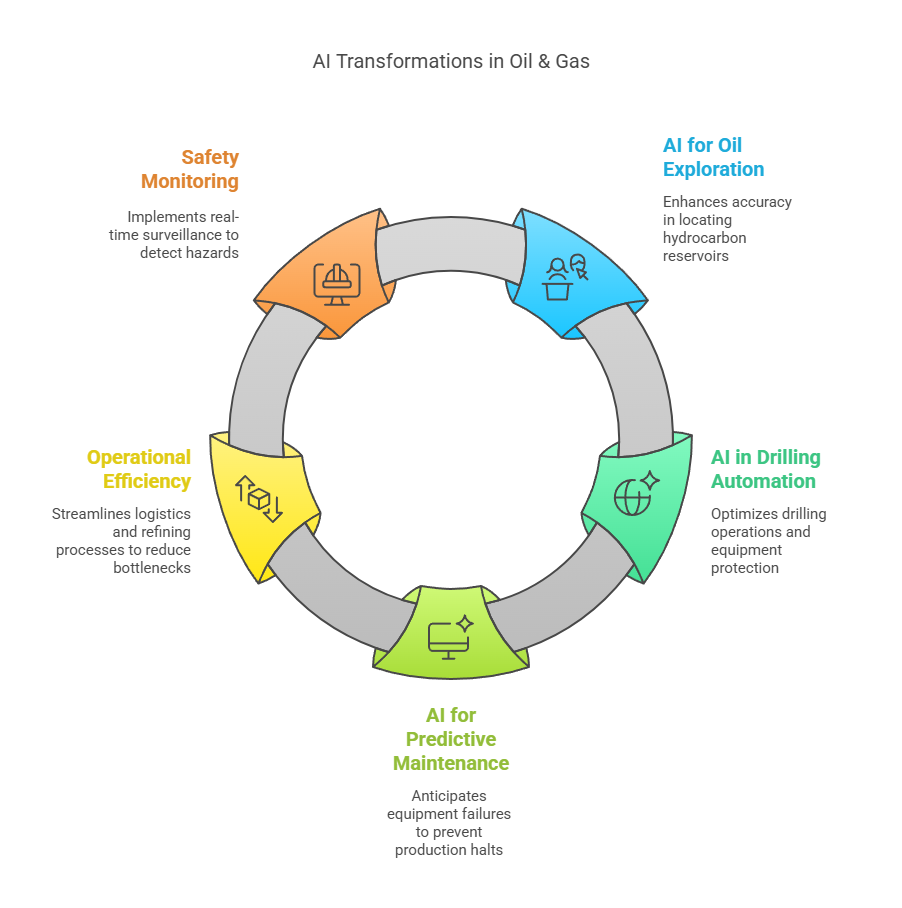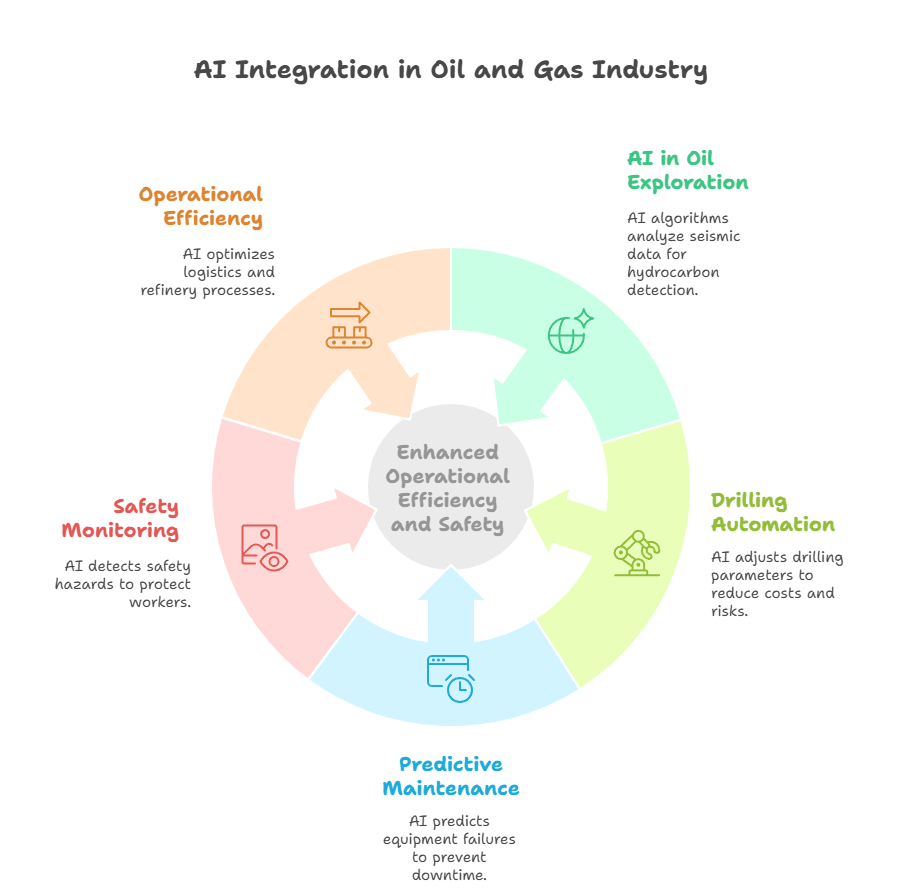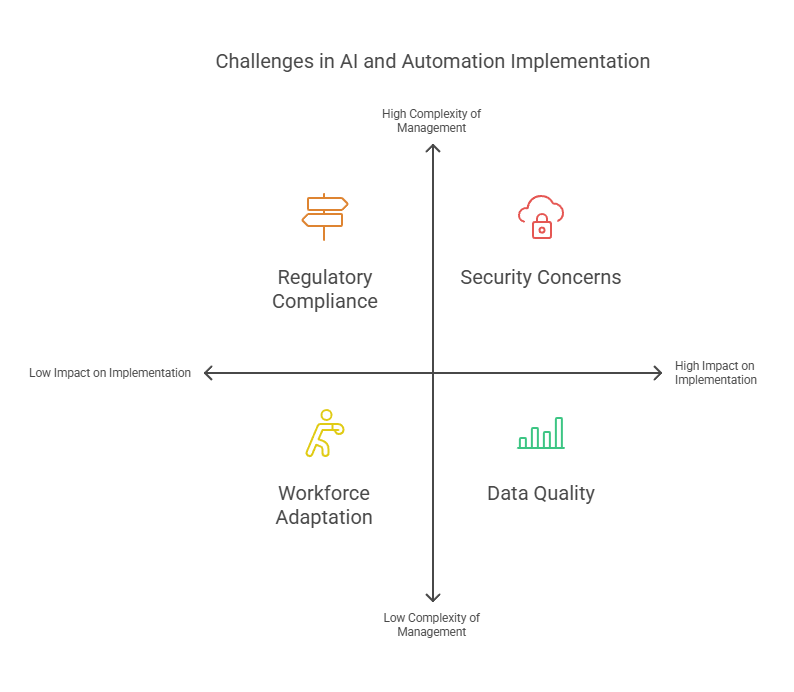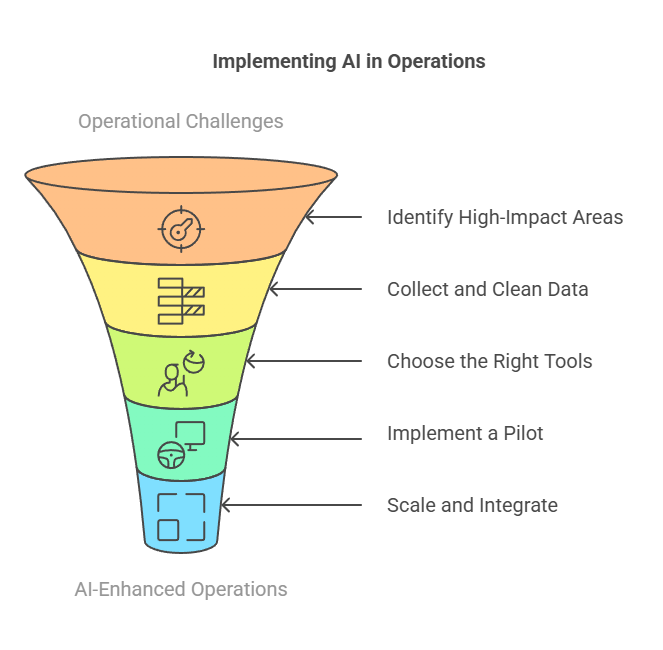Key Takeaways:
- AI can reduce unplanned downtime by up to 30% in oil and gas operations.
- Its applications span from advanced oil exploration to drilling automation, predictive maintenance, and real-time safety monitoring.
- Partnering with experts like Build Future can accelerate digital transformation and operational efficiency.
Table of Contents
- What Is “AI in Oil and Gas?”
- The Rising Importance of AI in Energy Sector
- Drilling Deeper: Key Applications of AI in Oil and Gas
- Challenges and Considerations
- Real-World Examples: AI Taking Center Stage
- Why AI in Drilling Automation Matters for the Future
- How to Get Started
- Subtle Ways to Tap Expert Support
- Future Perspectives: AI in an Evolving Energy Landscape
- Blocktech Brew: Your Partner for Digital Transformation
What Is “AI in Oil and Gas?”
When we say “AI in oil and gas”, we’re referring to the deployment of artificial intelligence and machine learning models at multiple stages of upstream, midstream, and downstream operations. Think smart drilling rigs that automatically adjust their torque based on real-time subsurface data, or sensors on pipelines collecting huge volumes of data so algorithms can predict leaks before they happen. While these might sound like futuristic scenarios, they’re already in motion. This technology is usually broken down into key segments:
This technology is usually broken down into key segments: - AI for Oil Exploration: Leveraging algorithms to correlate seismic data with historical wells for more accurate location of hydrocarbon reservoirs.
- AI in Drilling Automation: Using machine learning to optimize drilling speed, angle, and protect equipment from stress-induced failures.
- AI for Predictive Maintenance in Oil & Gas: Employing continuous monitoring of equipment conditions to anticipate failures before they turn into production-halting catastrophes.
- Operational Efficiency: Streamlining logistics, supply chain management, and refining processes to reduce bottlenecks.
- Safety Monitoring: Implementing real-time surveillance on pipelines, rigs, and facilities to detect toxic leaks, structural anomalies, or hazardous situations.
The Rising Importance of AI in Energy Sector
Energy demands are soaring worldwide, and the push for decarbonization means the oil and gas sector must become far more sustainable, efficient, and technologically advanced than ever before. AI is a key component in that transformation. According to McKinsey, adopting AI at scale in the energy sector alone could result in annual savings of over $200 billion, largely through operational optimization and predictive maintenance. The need for reliable data insights is another driving force. With offshoring and deep-sea drilling rising steadily, engineers are operating in hazardous and complex environments where real-time data is crucial for safe decisions. Mature fields are being pushed to yield more, putting extra strain on aging infrastructure. That’s exactly where artificial intelligence in oil and gas shines.Drilling Deeper: Key Applications of AI in Oil and Gas

1. AI for Oil Exploration
Oil exploration has always been a high-stakes, complex venture, involving seismic surveys, geological mapping, and advanced geophysical techniques. The integration of AI speeds up the process: algorithms decipher seismic readings faster than humans ever could. If an AI model detects patterns in seismic data that historically correlated to abundant hydrocarbon presence, it flags these areas for further exploration.- Real-World Example: A Middle Eastern national oil company reportedly used AI-driven seismic analysis to reduce exploration uncertainty by 15%. This data-based approach helped them avoid costly dry wells and allocate resources to more promising sites.
- Personal Aside: It’s fascinating to see a drill site chosen by an algorithm. Some geologists were initially skeptical—trusting a model over decades of human intuition is a bold leap, and the results speak for themselves.
2. AI in Drilling Automation
Drilling rigs operate on tight schedules and budgets. Wasted time can mean millions in cost overruns. By feeding historical drilling data and sensor inputs from the rig into a machine learning system, operators can automate drilling parameters like weight on bit and rotational speed. This automation reduces non-productive time (NPT) and decreases the risk of accidents.- Potential Pitfalls: An over-reliance on drilling automation might create skill and vigilance gaps among on-site crews, making continuous training essential.
- Efficiency Gains: Some data sets show drilling speeds increasing by up to 20% with real-time AI adjustments, significantly reducing operational delays.
3. AI for Predictive Maintenance in Oil & Gas
Instead of waiting for equipment to fail, sensors now continuously collect data on vibrations, temperatures, and pressures. AI models analyze these metrics to forecast when a failure might occur, alerting maintenance teams to intervene preemptively.- Case in Point: An offshore platform in the North Sea implemented AI-based predictive maintenance on rotating equipment and reported a 25% reduction in maintenance-related downtime within 18 months.
- Curious Tidbit: Occasionally, AI detects subtle anomalies that even seasoned engineers might overlook, showcasing a remarkable synergy between technology and human expertise.
4. Safety Monitoring with AI
Safety is paramount in oil and gas. Video analytics powered by machine learning can identify if a worker enters a restricted zone or if a pipeline begins leaking. Thermal imaging sensors integrated with AI can detect hotspots on equipment long before they escalate into dangerous incidents.- Stat to Note: According to the International Association of Oil & Gas Producers, digital safety tools, including AI-based monitoring, have contributed to a 16% reduction in occupational injuries in certain sectors.
5. Operational Efficiency Improvements
AI serves as a unifying layer across various functions—scheduling, inventory management, route optimization for supply vessels, and even automated spare parts ordering—eliminating redundancies and fostering inter-departmental synergy.- Logistics Optimization: Analysis of shipping and dispatch data can cut fuel costs and reduce emissions.
- Refinery Operations: Advanced AI can optimize chemical processes to yield higher outputs from the same feedstock, boosting overall profitability.
Challenges and Considerations
Implementing AI in the energy sector is not without its challenges:
- Data Quality: Machine learning algorithms depend on massive, accurate datasets; inconsistent data can compromise model reliability.
- Security Concerns: Storing sensitive reservoir and operational data in cloud-based systems introduces cybersecurity risks that must be rigorously managed.
- Workforce Adaptation: As traditional roles evolve with AI-driven automation, continuous training becomes essential to maintain high operational standards.
- Regulatory Compliance: Navigating diverse regional regulations for automated systems in critical infrastructure can slow the pace of implementation.
Real-World Examples: AI Taking Center Stage
North American Shale Operator
A prominent shale oil operator in North America deployed an AI-based system to detect blockages in horizontal wells. By analyzing real-time well data, the platform identified anomalies indicating sand buildups, resulting in approximately $1.2 million in avoided downtime within the first six months.Major Offshore Project
An international consortium applied machine learning to align reservoir pressure data with well logs from aging fields in an offshore mega-project. The improved reservoir model revealed pockets of bypassed oil, delivering a 5% production boost over time.Digital Twin of a Refinery
A European refinery created a digital twin to monitor real-time energy usage. By adjusting operational parameters based on AI-driven insights, the facility achieved a consistent 3% energy saving, illustrating the benefits of continuous optimization.Why AI in Drilling Automation Matters for the Future
“AI in drilling automation” is set to become even more pivotal as fields mature and achieving an optimal balance between cost and yield becomes increasingly challenging. By detecting subtle lithological changes in real time, automated drilling systems can adjust parameters like weight on bit or pause operations when necessary, ultimately protecting equipment and extending the life of the well. With fully autonomous drilling rigs on the horizon—especially in remote or extreme environments—the convergence of robotics, AI, and real-time analytics could soon redefine industry standards. For companies considering pilot projects, partnering with experts like Build Future can provide the tailored expertise needed to integrate these advanced systems seamlessly.How to Get Started
Step 1: Identify High-Impact Areas
Pinpoint bottlenecks or recurring issues in your operations. For many, predictive maintenance for high-value equipment represents a high-impact starting point.Step 2: Collect and Clean Data
Aggregate historical logs, sensor outputs, and operational data from various sources. Clean, accurate, and high-volume data forms the backbone of any successful AI initiative.Step 3: Choose the Right Tools
Decide whether to build an in-house data science team or collaborate with external specialists. There are numerous software platforms tailored to the energy sector—choose one that aligns with your needs.Step 4: Implement a Pilot
Start with a manageable portion of your operations—such as a single offshore pump system—and meticulously track performance improvements as you progress.Step 5: Scale and Integrate
Once the pilot proves its value, expand the AI solution across additional assets or processes. Ensure that each system easily communicates with your broader digital infrastructure.
Subtle Ways to Tap Expert Support
If you’re feeling the rush to modernize, remember that you don’t have to navigate the complexities alone. Many of the most advanced AI solutions emerge from close collaboration between technology experts and industry specialists. A brief consultation can help clarify your short-term and long-term strategies, whether you need customized machine learning models or full system integration. For comprehensive support—from system architecture to deployment—consider reaching out to Build Future.Future Perspectives: AI in an Evolving Energy Landscape
As the energy transition accelerates, oil and gas companies must adapt to stricter environmental regulations, evolving market dynamics, and increased competition from renewable energy sources. Implementing AI-driven solutions is just one facet of a broader digital transformation journey. Companies that successfully integrate AI often build a more adaptive infrastructure, enabling them to quickly pivot resources to more lucrative or sustainable ventures. Envision a future where AI not only monitors operations but also guides strategic decisions on asset allocation and field development. If these trends pique your interest, now is the time to explore how AI-driven optimization can redefine your operations.Blocktech Brew: Your Partner for Digital Transformation
I am the CEO and founder of Build Future , a company dedicated to championing innovation in traditional sectors. Our expertise spans blockchain, AI, and advanced analytics, serving industries such as oil and gas, finance, and healthcare. From predictive maintenance that cuts downtime to AI-driven solutions for real-time asset monitoring, our tailored services are designed to meet your organizational needs. Whether you are a major integrated corporation or an independent operator, we are here to help you harness the power of AI for a more efficient, sustainable future.Frequently Asked Questions
Q1: What is AI in Oil and Gas?
A: AI in oil and gas refers to the integration of artificial intelligence and machine learning technologies across various stages of the industry—from exploration and drilling to maintenance and safety monitoring—to enhance overall operational efficiency.Q2: How can AI improve drilling operations?
A: AI automates drilling parameters by analyzing real-time data, which helps optimize drilling speed, reduce non-productive time, and minimize risks associated with equipment failures.Q3: How do I get started with implementing AI in my operations?
A: Start by identifying high-impact areas, gathering and cleaning your data, choosing the right tools, running a pilot project, and finally scaling up your solution with expert support when needed.



